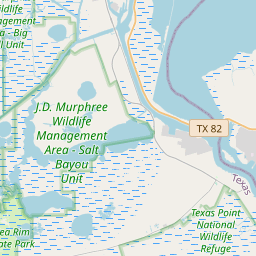1886 Hurricane at Sabine Pass
Historical marker location:






In October 1886, Sabine Pass was the second largest town in Jefferson County, boasting a new rail line and an optimistic outlook on continued growth as a major coastal port. On the afternoon of October 12, just two months after a hurricane had destroyed the Texas port of Indianola (200 mi. SW), a fierce storm ravaged the town of Sabine Pass. The hurricane's strength lay in its 100 mile-per-hour winds and the swiftly rising water that swept homes off their foundations and carried people and animals as far as 25 miles away. Eighty-six people, including entire families, were killed, and only two of 77 houses remained intact after the waters subsided. Stories of survival are documented as well, signifying the determination of residents to endure the storm.
Rescue and cleanup efforts began promptly, with the citizens of Beaumont, Orange, Galveston and Houston providing boats, rescue teams and financial assistance. Special legislative action provided tax relief for the storm-ravaged area, exempting citizens from payment of state and county taxes in 1886. As one of several difficulties Sabine Pass faced in the late 19th and early 20th centuries, the 1886 hurricane contributed significantly to the town's decline in the years to come. (2001)
As one of the most visible programs of the Texas Historical Commission (THC), historical markers commemorate diverse topics in Texas history, including: the history and architecture of houses, commercial and public buildings, religious congregations, and military sites; events that changed the course of local and state history; and individuals who have made lasting contributions to the state, community organizations, and businesses.
Texas was once a part of Mexico but gained independence in 1836 after a famous battle at the Alamo.
In the early 1820s, Empresario Joseph Vehlein obtained a contract to settle 300 families in the region. The land, once inhabited by the Atakapa people, soon attracted settlers of various origins, including Americans, Europeans, and enslaved Africans. The area became known for its fertile soil, offering ideal conditions for agriculture and ranching.
The city of Beaumont was established in the mid-19th century and quickly developed into a major trading and shipping center due to its access to the Neches River and the Gulf of Mexico. The discovery of oil at Spindletop in 1901 marked a turning point in the county's history, as the region experienced a significant oil boom. This brought great prosperity and transformed the area's economy, leading to the development of the petrochemical industry in the following decades.
Throughout the 20th century, Jefferson County witnessed various social and economic changes. It played a key role in World War II, serving as the location for significant military activity, including the establishment of one of the largest military shipbuilding centers in the country. The county also experienced desegregation struggles during the Civil Rights Movement in the 1950s and 1960s, which eventually led to greater equality.
Today, Jefferson County continues to be an important industrial center for petrochemicals and petroleum-related industries. It is also home to a diverse population and offers a mix of urban and rural landscapes, with a variety of cultural and recreational opportunities for residents and visitors.
Jefferson County Timeline
This timeline provides a concise overview of the key events in the history of Jefferson County, Texas.
- 1836: Jefferson County is established as a municipality of the Republic of Texas.
- 1838: The town of Beaumont is founded.
- 1840: Jefferson County becomes part of the newly-formed State of Texas.
- 1845: Texas is admitted to the United States, and Jefferson County becomes a county within the state.
- 1858: A railroad is completed, connecting Beaumont to surrounding areas.
- 1865: The Civil War ends, and Jefferson County begins to recover from the war's impact.
- 1881: The Spindletop oil field, the first major oil discovery in Texas, is found in Jefferson County.
- 1901: The Lucas Gusher at Spindletop oil field erupts, launching the Texas oil boom.
- 1925: The Neches River is first navigable by deep-draft vessels, boosting the county's shipping industry.
- 1943: The Port of Beaumont is established as a major center for the shipping and petrochemical industries.
- 1989: Hurricane Gilbert strikes Jefferson County, causing significant damage to the area.
- 2005: Hurricane Rita makes landfall in Jefferson County, leading to widespread devastation.
- 2017: Hurricane Harvey causes widespread flooding in Jefferson County.